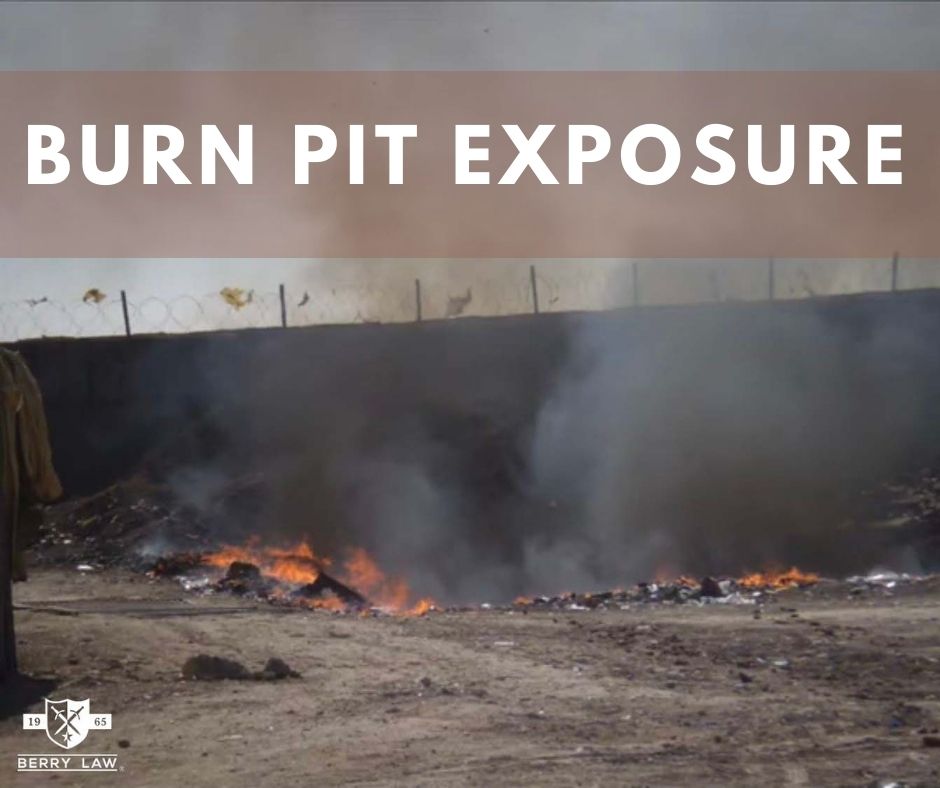
Military bases throughout Southwest Asia used open-air burn pits to get rid of waste. This waste included fuel, metal, rubber, chemicals, paint, medical waste, human waste, plastics, and munitions, rotten food, all of which were burned together. Breathing in any smoke is not healthy, however, burn pits are particularly dangerous due to the material that was burned. Burn pits have been called the “modern Agent Orange” due to the significant, long-standing damage they cause in veterans and the widespread use and exposure veterans experienced.
Burn pits were most prevalent in Iraq and Afghanistan. The United States has admitted to operating 84 burn pits in Iraq and Afghanistan, however, over 221 burn pits have been confirmed in Afghanistan alone. However, they were used at a variety of locations throughout Southwest Asia including Djibouti, Oman, United Arab Emirates, Qatar, Bahrain, Kuwait, Saudi Arabia, Syria, and Uzbekistan. Burn pits were used at American bases throughout these countries.
No burn pits were “good,” however some were larger than others. Balad Air Base in Iraq maintained a 10-acre burn pit which burned 100 to 200 tons of material per day. Not only did Balad have one of the largest burn pits, but it was also infamous for the burn pit’s close proximity to the base. Significant amounts of waste, including jet fuel, were burned and released through the smoke. Smoke from the burn pit regularly blew across the base and into living areas. An environmental engineer investigating Balad declared that it was the “worst environmental site” he had seen in 17 years of experience.
In Afghanistan, Bagram Airfield produced a significant amount of burn waste. An eight-year study of weekly air samples found that the particulate matter in the air was two to three times the maximum permitted standards. Bagram Airfield was one of the primary entry and exit points for forces entering and leaving the country, and therefore most servicemen and women who deployed to Afghanistan were exposed to the smoke from Bagram’s burn pit.
Outside of Iraq and Afghanistan, significant burn pits were operated at Karshi Khanabad Air Base (K-2) in Uzbekistan. Environmental monitoring has found almost 400 different chemicals in the smoke from the burn pits at K-2. These include petrochemicals from jet fuel and kerosene, tetrachloroethylene (a chemical associated with numerous cancers), and radioactive material and depleted uranium. A 2015 study found that K-2 veterans had a 500% greater chance of developing cancer, and overall had a 75% chance of developing a related illness.
Fortunately, VA disability benefits are not provided based on the largest burn pits. All burn pits are dangerous and come with a significant danger of long-term health effects. The VA does not require proof that the veteran was exposed to the worst burn pits to be entitled to benefits, they only require proof that the veteran served in Southwest Asia.
The VA has recently issued new regulations providing a presumption of service connection due to burn pit exposure if you have certain conditions. These include asthma, rhinitis, and sinusitis. A presumption of service connection means that the VA has received sufficient medical evidence to support that certain conditions are related to exposure to burn pits. This presumption means that you only have to prove that you were deployed to the region and have asthma, rhinitis, or sinusitis to receive service connection. You do not have to prove that you were specifically exposed to burn pits, and you do not have to provide medical evidence showing that these conditions are related to burn pit exposure.
For conditions other than asthma, rhinitis, and sinusitis, medical evidence will be required to show that your condition can be caused by burn pit exposure. Aside from asthma, sinusitis, and rhinitis, the following are some of the conditions that have been associated with burn pit exposure:
Let Berry Law review your medical records and service history if you have not been able to add a VA disability rating for skin conditions caused by exposure to military burn pits. Our attorneys have extensive experience helping Veterans file appeals that ultimately increase their disability ratings. We understand how the VA establishes disability ratings, and we have studied the evidence for skin conditions Veterans have contracted after exposure to burn pit smoke.
We do not charge disabled Veterans for legal assistance unless we win their VA appeal. Contact us today for a free, no-obligation review of your claim file and a discussion of increasing your VA disability rating. We are Veterans helping Veterans. Don’t go to battle alone.
Our monthly newsletter features about important and up-to-date veterans' law news, keeping you informed about the changes that matter.